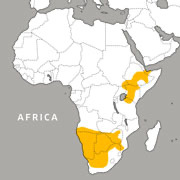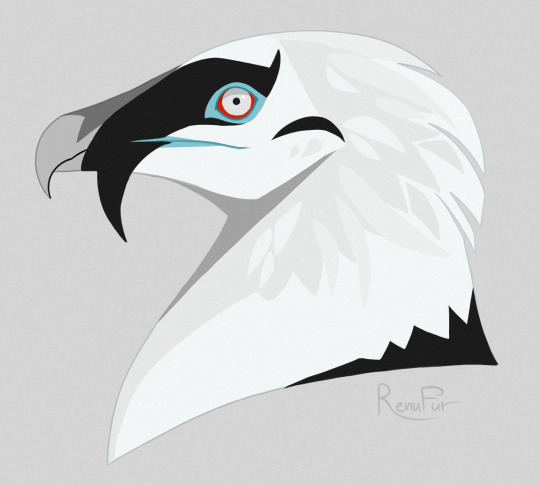#african bird
Explore tagged Tumblr posts
Note
can i suggest the african hoopoe? one of my favorite birds.
Absolutely, I've always loved the way they look!


#african bird#african birds#southern africa#african hoopoe#hoopoe#bird#birds#birding#bucerotiformes#upupidae#animal polls#poll blog#my polls#animals#polls#tumblr polls
94 notes
·
View notes
Photo

Meet the Shoebill Stork, an Enormous Bird That Looks Like a Muppet
Looking like a mix between a dinosaur and a Jim Henson puppet, the shoebill stork (Balaeniceps rex) is a sight to behold. The large African bird gets its name from its distinct beak, which looks like a shoe. Sometimes called a whale-headed stork, these birds actually aren’t storks at all, but are more closely related to pelicans and herons. These solitary birds are not only fascinating for their prehistoric look but also for their behavior.
Photo: Nazzu/Depositphotos
#nazzu#photographer#depositphotos#shoebill stork#stork#bird photography#balaeniceps rex#african bird#whale-headed stork#nature
85 notes
·
View notes
Text
Stone-curlew
(bird of the day)
#Stone-curlew#Curlew#bird of the day#South American bird#African bird#European bird#Asian bird#Australian bird
0 notes
Text
Words cannot express how much I love this bird.
54K notes
·
View notes
Text

Lilac breasted roller, a bit disheveled before morning coffee.
19K notes
·
View notes
Text

This bit made me shriek out loud so ofc I had to draw it. I love u Permit Office
#hermitcraft#hermitcraft s10#hermitcraft spoilers#zombiecleo#grian#permit office#nopoe#art#ink does minecraft art tag#i havent drawn a real piece in ages and this. this is the thing that finally did it#ALSO THIS IS NICHE AND NO ONE CARES but the bird grian's wings are based on here is an african sacred ibis#1k#5k
6K notes
·
View notes
Text

Walkin’
Stickers available on my redbubble !
#african grey parrot#bird#birds#my post#my posts#African gray#african gray parrot#African grey#my art#digital art#parrot art#bird art#bird artwork#my artworks#my artwork
838 notes
·
View notes
Text
Bird of the Week: The Kori Bustard! 🪶

I just wanna yap about these guys I really love them.
The kori bustard (Ardeotis kori), is the heaviest flying bird, with adult males weighing anywhere between 25-42 lbs. However, they tend to spend most of their lives on land.

While emitting a deep booming call, males will puff up their neck plums and tail feathers for a mating display.

They are native to grasslands, savannas, and wooded areas throughout southern Africa.

These beasts are omnivorous, with diets made up of insects, reptiles, small mammals, small birds, and plant matter such as seeds and berries.

#birds#wildlife#bird#birdblr#ornithology#wildlife facts#bird of the week#kori bustard#african wildlife#not my photography
817 notes
·
View notes
Text

Behold the beautiful Great Blue Turaco (Corythaeola cristata)! Growing up to 30 in (76.2 cm) long, this forest-dwelling bird can be found in parts of Central and West Africa such as Uganda and Guinea. It feeds on a diet that includes fruits, leaves, and insects. While it isn’t a long-distance flier, this bird uses its wings to flutter through the trees—rarely descending to the ground. It can most often be spotted in small groups.
Photo: Nik Borrow, CC BY-NC 4.0, iNaturalist
#science#nature#natural history#animals#fact of the day#did you know#birds#ornithology#turaco#africa#african birds#cool animals#fun facts
794 notes
·
View notes
Text




Gypaetinae
#Gypaetinae#Bearded vulture#Palm-nut vulture#Egyptian vulture#African harrier-hawk#art#kaarum#harpy#bird
2K notes
·
View notes
Text

Peace on earth!
(gift for @plankhandles of their sweet angelic being)
503 notes
·
View notes
Note
How about the Little Egret?


#eurasian bird#african bird#australian bird#little egret#egret#ardeidae#pelecaniformes#bird#birds#aquatic birds#animal polls#poll blog#my polls#animals#polls#tumblr polls
65 notes
·
View notes
Photo

Meet the Shoebill Stork, an Enormous Bird That Looks Like a Muppet
Looking like a mix between a dinosaur and a Jim Henson puppet, the shoebill stork (Balaeniceps rex) is a sight to behold. The large African bird gets its name from its distinct beak, which looks like a shoe. Sometimes called a whale-headed stork, these birds actually aren't storks at all, but are more closely related to pelicans and herons. These solitary birds are not only fascinating for their prehistoric look but also for their behavior.
Photo: Webitect/Depositphotos
#webitect#depositphotos#photographer#shoebill stork#bird photography#stork#balaeniceps rex#african bird#whale-headed stork#nature
53 notes
·
View notes
Text

White Tern
(bird of the day)
#White Tern#Tern#Laridae family#bird of the day#Seabird#African bird#Asian bird#Australian bird#South American bird
0 notes
Text

East African eland Tragelaphus oryx pattersonianus
With yellow-billed oxpecker Buphagus africanus, on male eland's back, and red-billed oxpecker Buphagus erythrorhynchus, on male eland's flank
Observed by andrewandrawes, CC BY-NC
#Tragelaphus oryx pattersonianus#East African eland#Bovidae#antelope#Buphagus africanus#yellow-billed oxpecker#Buphagus erythrorhynchus#red-billed oxpecker#passerine#bird#non-ungulate#Africa#Kenya
218 notes
·
View notes
Text
Join me at a birthday party for a parrot
I'm not even joking. Scully the parrot is turning 30, so on March 13th we're taking over The Raven Gallery in Toronto to celebrate. RSVP and more details: https://eatf.art/30
First drink is on Scully, but the bar is what's paying for the event, so please feel free to have more than one. BYOB (bring your own bird).
Please note that I will not be selling merch or signing at this event. You can check my appearance page for details on where I'll be doing that next. Toronto Comicon starts the day after Scully's birthday, and I'll be there all three days at table P112.

#birds#swearing#funny#comics#vulgarity#art#comic#nature#illustration#bird#birthday#happy birthday#african grey parrot#scully as in mulder#byob#bring your own bird
282 notes
·
View notes